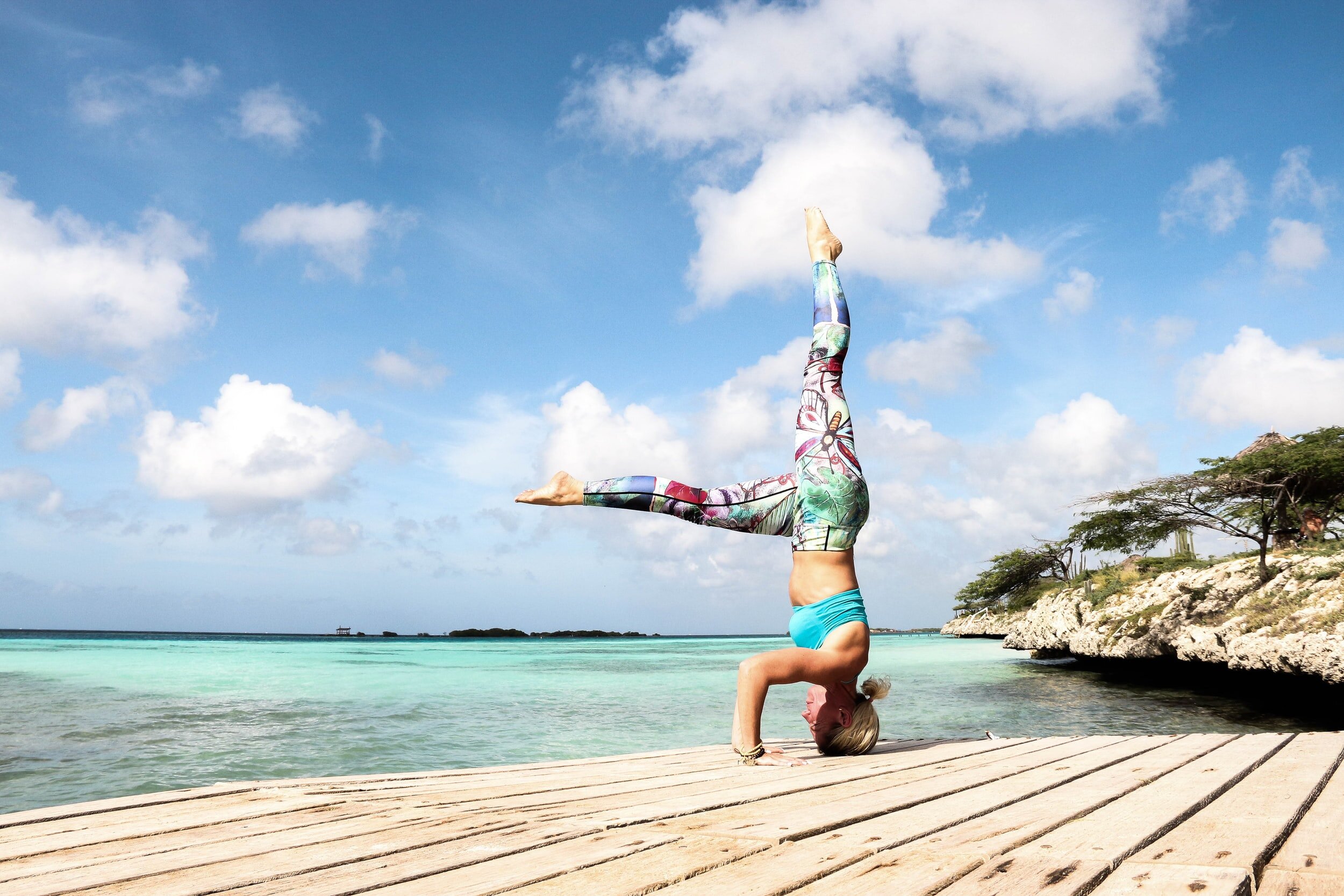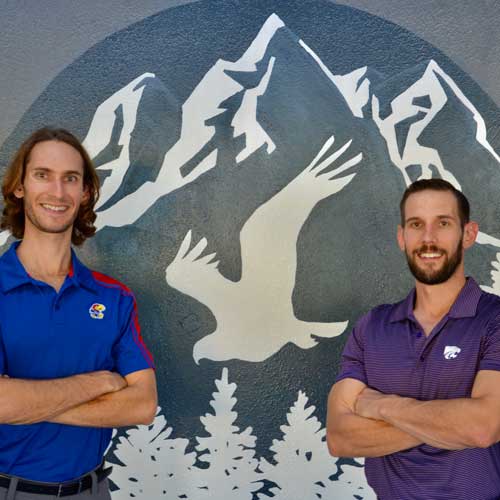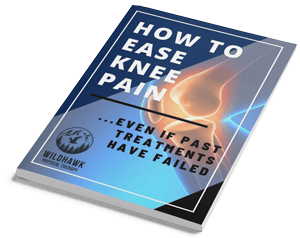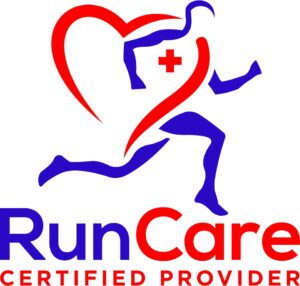Yoga is widely used as a meaningful way for individuals of all walks of life to improve flexibility, strength, cardiovascular health, mental health and overall well-being. Yoga is not a one size fits all exercise regimen and a skilled yoga instructor is crucial to ensure safety. As with all forms of exercise, the risk for injury is inherent. It is noted that roughly 1 in 5 yoga participants will report an acute injury at some point as a direct result of yoga activity and 1 in 10 will report a chronic injury(2).
Yoga is generally speaking a very safe form of exercise but injuries do happen. It is reported that shoulder, low back and pelvis, lower extremity and head and neck injuries are most common in yoga(2,3). Movements and poses that are most commonly associated with both acute and chronic injuries involve forward and backward bending as well as head stands, shoulder stands, and handstands(2,7). For purposes of this post the author would like to focus on the aforementioned positions and briefly discuss potential injuries specifically as they relate to the shoulder and cervical and lumbar spine.

It should be easy to see how positions such as shoulder stands and handstands require a great deal of upper body strength and control even if they are assisted in some capacity. For many people, they will utilize compensatory patterns such as extremes of shoulder hyperflexion and hyperextension or muscular imbalances to achieve and maintain these positions.
Scapular (shoulder blade) stabilizers such as the middle and lower trapezius and serratus anterior can often be weak or under-recruited in many individuals. Yoga itself can be a great way to strengthen these muscles if advanced and progressed properly(1). For many people, even outside of yoga, we see that upper trapezius and levator scapulae are lengthened and weak or simply over-recruited which can begin to lead to dysfunction and pain. This is just one example of compensation with certainly many more possible.
In addition to muscle imbalances a person may also have weak rotator cuff muscles which are responsible, in part, for stability of the glenohumeral (shoulder) joint. It is also possible to have degenerative or chronic changes to the ligamentous support of the shoulder joint which can further lead to potential pain and/or injury during these shoulder and hand stand positions. The combination of muscular imbalances, poor scapular and rotator cuff strength, and shoulder instability could lead to an injury over time when performing certain yoga poses.

Another possible shoulder and arm pain generator that should be considered is the relationship between the neck and your upper extremities. If you feel that you are constantly straining your neck in particular yoga positions it is possible that your shoulder pain could actually be referred from your cervical spine. Neurovascular (nerves and arteries) impingement at the neck and shoulder region could lead to a plethora of symptoms and paresthesias into the arms and hands including numbness, tingling, and a feeling of coldness in the hands or digits.
If you have pain or symptoms such as these you should take caution and avoid reproducing and aggravating these symptoms. A skilled physical therapist’s evaluation should be able to assist you in locating the source of your pain or symptoms. He or she should be able to develop a comprehensive treatment plan likely involving strengthening, hands on care, and education to help you return to yoga as quickly and safely as possible.

It should also be easy to imagine how extreme backbends and forward bending along with head stands can put a great deal of stress on the cervical and lumbar spine. These positions are particularly important for older adults to be conscious of, as well as those individuals diagnosed with sarcopenia, osteopenia and/or osteoporosis(7). Extreme spinal flexion (forward bending) exercises could potentially lead to vertebral body compression fractures(4,5,6). Extreme spinal extension (backward bending) exercises and positions could potentially aggravate a degenerative spinal segment, a functional instability or a chronic spondylolisthesis(3). Compression forces to the spine from a head stand position could irritate or aggravate an already sensitive joint(3).
For a majority of the population these positions and exercises are much more likely to result in a strain or sprain injury of the spinal muscles and ligaments7. Fractures are much more likely to be seen in individuals 65 years of age or older7. If you have noticed acute pain or a “flare up” of a chronic ache or pain in your neck or low back with some of these movements it is possible you have an injury that could benefit from an assessment by a skilled physical therapist. A treatment plan, likely involving strengthening, education, and manual therapy can assist you in returning safely to yoga!
Yoga is a great way for people of all types to become more flexible, get stronger, stay active and maintain good mental health. This author wanted to highlight some of the possible injuries associated with yoga to better inform the reader on certain positions to be mindful of as well as to listen to their body if they begin to experience pain. If you happen to sustain an injury during yoga or have noticed pain with certain movements it may benefit you to see a licensed physical therapist for an assessment to develop an individualized treatment plan to get you back to yoga pain free as fast as possible!
If you would like to speak with a physical therapist please click below to schedule an evaluation or schedule a 20 minute FREE screen.
The WildHawk PT blog is for information purposes only. The bloggers are licensed physical therapists. The content published in this blog represent the opinion of the author based on their expertise and experience. The content provided does not constitute medical advice and should not be relied on for making personal health decisions.
1. Chopp-Hurley JN, Prophet C, Thistle B, Pollice J, Maly MR. Scapular Muscle Activity During Static Yoga Postures. J Orthop Sports Phys Ther. 2018;48(6):504-509. doi:10.2519/jospt.2018.7311
2. Cramer H, Quinker D, Schumann D, Wardle J, Dobos G, Lauche R. Adverse effects of yoga: a national cross-sectional survey. BMC Complement Altern Med. 2019;19(1):190. Published 2019 Jul 29. doi:10.1186/s12906-019-2612-7
3. Lee M, Huntoon EA, Sinaki M. Soft Tissue and Bony Injuries Attributed to the Practice of Yoga: A Biomechanical Analysis and Implications for Management. Mayo Clin Proc. 2019;94(3):424-431. doi:10.1016/j.mayocp.2018.09.024
4. Sfeir JG, Drake MT, Sonawane VJ, Sinaki M. Vertebral compression fractures associated with yoga: a case series. Eur J Phys Rehabil Med. 2018;54(6):947-951. doi:10.23736/S1973-9087.18.05034-7
5. Sinaki M. Yoga spinal flexion positions and vertebral compression fracture in osteopenia or osteoporosis of spine: case series. Pain Pract. 2013;13(1):68-75. doi:10.1111/j.1533-2500.2012.00545.x
6. Smith EN, Boser A. Yoga, vertebral fractures, and osteoporosis: research and recommendations. Int J Yoga Therap. 2013;23(1):17-23.
7. Swain TA, McGwin G. Yoga-Related Injuries in the United States From 2001 to 2014. Orthop J Sports Med. 2016;4(11):2325967116671703. Published 2016 Nov 16. doi:10.1177/2325967116671703









